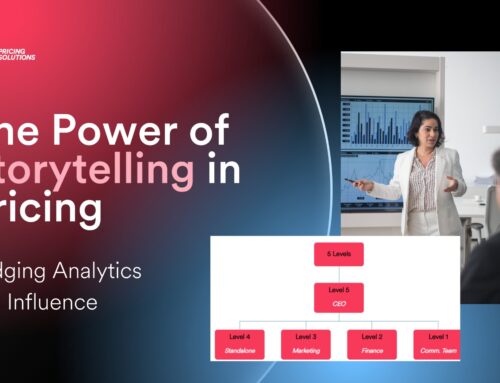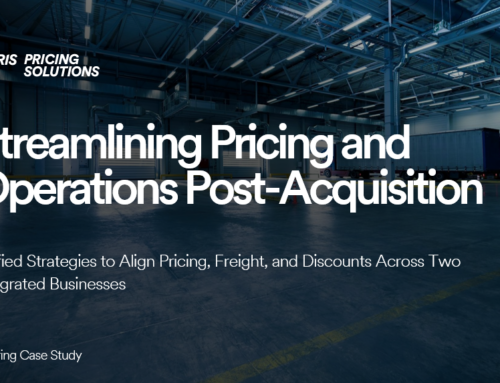Why Inaction on Pricing Is Quietly Costing Companies Millions
By: Kirk Jackisch, President, Iris Pricing Solutions
Markets are jittery. Budgets are tight. Tariffs are unpredictable. And yet, across industries, the dominant pricing strategy seems to be… doing nothing.
At Iris Pricing Solutions, we’ve had conversations with dozens of pricing leaders across sectors over the past six months. The message is consistent:
“We’re watching. We’re waiting. We’re not making any drastic moves—yet.”
But here’s the problem: “wait and see” is still a strategy. And in a volatile economy, it’s one of the costliest you can choose.
The Cost of Inaction
If you’re waiting for certainty before acting on pricing, you’re already behind. Uncertainty does not pause cost increases. It doesn’t stall customer expectations. And it doesn’t slow the erosion of internal pricing confidence across sales, product, and finance teams.
In many organizations, price architecture has not kept up with changes in cost structure, demand elasticity, or channel complexity. But few are reevaluating the fundamentals—often out of fear that acting prematurely could backfire. Ironically, the longer the delay, the more pricing power deteriorates.
A Data Point Worth Watching
Iris Pricing Solutions recently conducted a survey of pricing professionals across industries to understand the effects of tariff uncertainty on their pricing decisions.
When asked to what extent recent or potential tariffs have impacted their business or industry:
- 40% said significantly
- 40% said moderately
- 6.7% said slightly
- 13.3% said unsure
Not a single respondent selected “not at all.”
Yet despite this clear recognition of impact, very few companies have implemented a formal pricing response — no updated playbooks, no structural pricing strategy changes, and no revised communication to customers or internal teams.
In a follow-up question, we asked what specific challenges companies are facing when setting prices due to unclear or changing tariff policy:
- 73.3% cited customer pushback or resistance
- 66.7% reported delayed pricing decisions
- 60% pointed to increased cost forecasting difficulty
- 40% noted supply chain disruptions
The data paints a clear picture: companies know they’re under pressure—but they’re choosing not to act.
Why Pricing Is the Lever Most Firms Are Ignoring
You may not be able to control inflation, trade policy, or wage escalation.
But you can control how your company defends and communicates value.
In fact, pricing remains one of the few commercial levers companies can control in an uncertain economy. Yet it’s often deprioritized in favor of reactive tactics—cost containment, deal-based promotions, or deferred investments.
Smart companies are using this moment not to raise prices blindly, but to revisit how they:
- Model risk into pricing scenarios
- Repackage offerings to match buyer hesitations
- Equip sales teams to defend price with renewed value stories
- Identify where they’re unintentionally giving margin away
In other words: they’re using pricing strategically, not reactively.
This Isn’t About Panic. It’s About Proactivity.
The intent here isn’t alarmism. It’s alignment.
We’re urging leaders to recognize that pricing inaction isn’t neutral—it’s cumulative.
It compounds over time. And by the time a company feels its impact in the P&L, it’s already embedded in customer expectations, sales behavior, and channel noise.
What Comes Next
We’re in a period of prolonged economic ambiguity. Tariffs may continue to shift. Budget scrutiny may persist. But amid that uncertainty, pricing decisions remain a critical determinant of margin, competitiveness, and survival.
This isn’t the time to sit still. It’s the time to reevaluate—strategically, not reactively.
Explore With Intent
Iris offers a Pricing Power Diagnostic designed to help companies identify where value leakage is occurring—and how to reassert control through practical, insight-driven action.
You don’t need to overhaul your pricing. But you do need to understand what silence is costing you.









